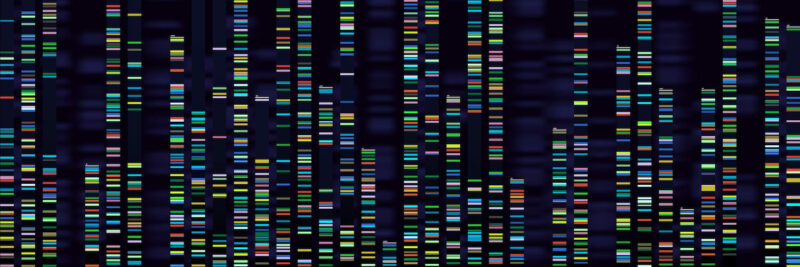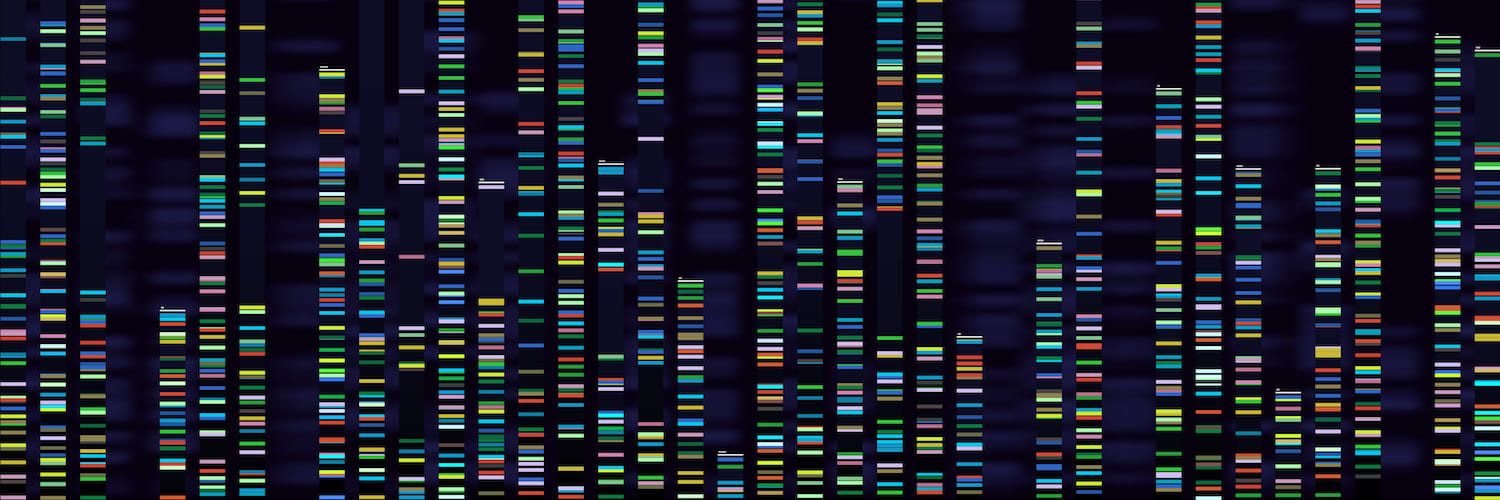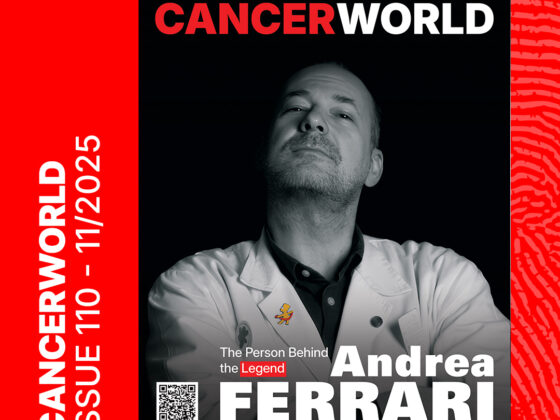The development of next generation sequencing (NGS) has been a game changer for our understanding of genetics, and in turn for many aspects of biomedicine. This includes cancer, where it has led to greater understanding of the genetic changes that lie behind a cancer diagnosis, and enabled a precision approach to its treatment in some cases.
Its enhanced speed and affordability compared with previous sequencing techniques has made it feasible to introduce genetic sequencing into standard diagnostic practice. It may be used for sequencing single genes, such as screening for pathogenic BRCA mutations, which was its first use in a clinical setting. Or it can be used to sequence panels of genes known to carry disease-causing mutations, or in some cases the whole exome ‒ all the DNA known to code for proteins – and even mRNA, which reveals differential expression of proteins even in the absence of mutations.
But rolling out a molecular diagnostics approach based on NGS across Europe is not a simple endeavour. While some countries have made strides, others lag behind in developing systems with an infrastructure that can incorporate this approach into clinical practice.
The techniques used to identify biomarkers that can inform treatment are not restricted to the use of NGS. For example, the 30% of people with breast cancer who overexpress the ERBB2 (HER2) proto-oncogene ‒ and would benefit from a drug that inhibits that expression ‒ can be identified using immunohistochemistry to detect the protein, or the fluorescent in situ hybridisation (FISH) method to detect the presence of the amplified gene. “At the moment, the most extensive tumour testing done is relatively simple… it’s really not molecular diagnostics at all,” says Martijn Lolkema, a medical oncologist at the Erasmus MC Cancer Institute in Rotterdam, who has been involved in designing and building a national collaborative group to implement NGS for cancer patients. But as he adds, things are now starting to change, with the use of more extensive testing panels, “that is starting to be something that’s used in regular care.”
France provided early evidence that NGS could be cost-effective in testing for EGFR mutations in cases of non-small-cell lung cancer
Some European countries were faster to spot the utility of NGS than others, explains oncologist Mark Lawler, from Queens University Belfast, and Scientific Director of DATA-CAN, the UK Health Data Research Hub for Cancer. France provided some of the early evidence that the approach could be cost-effective in testing for pathogenic mutations in the epidermal growth factor receptor (EGFR) gene in cases of non-small-cell lung cancer, and providing inhibitors to those patients. “They did a health economics analysis… and they showed up front that this will actually save money… That made it very easy for the French government to decide to introduce 28 laboratories,” says Lawler.
The power of such biomarker testing is now indisputable. A 2020 analysis of data from France of 1,213 patients with lung cancer, colorectal cancer, or melanoma showed that NGS testing done between 2013 and 2016 at one of seven certified biomolecular platforms led to identification of at least one genomic alteration in 75% of them; 53% of the alterations were actionable, leading to better survival outcomes after one year.
Access to molecular diagnostics is still patchy across Europe. “Germany, Denmark, Sweden, Finland, and the UK exhibit the highest uptake of NGS,” says Natacha Bolaños from the Lymphoma Coalition patient advocacy group, adding that countries with centralised systems that permit infrastructure investment generally demonstrate greater uptake than others. A 2021 report from a consortium of policy, patient and industry groups, set up to identify barriers to biomarker testing in Europe, found that access to multi-biomarker tests was even more restricted, with only Sweden, Denmark and Germany providing what they classed as ‘high access’. As might be expected, access was particularly low in eastern Europe.
“Only a quarter to a third of patients will currently have molecular abnormalities for which we can test”
Pathologist Claudio Luchini, from the University of Verona, acknowledges that it is currently impossible to sequence all tumours. “We have to have a tailored approach for selecting the right cases in the right patients for sequencing,” he says, which means focusing on sequencing the right tumours at the right time in the patients’ disease. And indeed the number of biomarkers that can actually inform treatment remains quite limited. Lawler estimates only a quarter to a third of patients will currently have molecular abnormalities for which we can test, though he is confident that will increase: “We probably see 10‒15 new molecular assays coming out every year to eighteen months… so I think we certainly will get to a stage where that pie chart will be much more highly represented with molecular markers that will then aid in [clinical] decision making.”
For many this means that NGS will be an approach of last resort, and used primarily in a metastatic setting, for instance in non-small-cell lung, prostate and ovarian cancer, and for those who do not respond to standard treatments. Luchini explains, for example, that although 90% of pancreatic malignancies will be pancreatic ductal adenocarcinoma, the remaining 10% will behave differently. “These should be analysed with next generation sequencing,” he says, which will usually be done with targeted panels of genes. “The targeted panels, ranging from 100 to 300 of genes, are already very good, because they can find more than 99% of the potential targets for molecular based therapies,” he says. What’s important, adds Luchini, is to “use the right molecular panel in the right moment.”
There are occasions where whole genome sequencing is being used outside a research setting. Lolkema gives the example of screening patients for early-phase clinical trials, “That has been very successful where we’re identifying patients that have actionable mutations,” he says. More extensive sequencing is also used for carcinoma of unknown primary origin (CUP). “We combine that at this moment with transcriptome sequencing [analysing which genes are being transcribed into proteins].” A combination of both is able to identify a primary tumour tissue of origin in up to 90% of cases, maybe even more,” says Lolkema. Treating CUP in line with the likely primary tumour tissue of origin can improve survival in some cancer types.
In the UK whole genome sequencing is also available for sarcoma, paediatric cancers, haematological malignancies, and central nervous system tumours, according to Matthew Krebs, a medical oncologist at The Christie NHS Trust and the University of Manchester.
Molecular tumour boards
One approach to molecular diagnostics that has been adopted widely is the use of molecular tumour boards, pioneered by Michigan University. These are multidisciplinary meeting designed to identify and discuss potential therapeutic strategies based on molecular diagnostic results and other factors such as a patients’ comorbidities and previous treatment. Those attending will include clinical oncologists, pathologists and, less often, geneticists, bioinformaticians, molecular biologists and even occasionally bioethicists.
In 2020 Luchini and colleagues conducted a review of 40 publications analysing this approach. Of 1,107 molecular tumour boards, indications for molecular-based therapies were found for 17.6% of cases. “It’s a very significant proportion “…” the approach improves outcomes,” he says. Given the increasing complexity of information provided by molecular diagnostic and oncology therapeutics, he argues that, “an oncologist alone cannot know the histological variant of pancreatic ductal adenocarcinoma is enriched in microsatellite instability for example, and at the same time, a pathologist alone can make the diagnosis.” Lolkema agrees, “It’s really key to the implementation of these types of testing,” and adds that the molecular tumour board is not just there to interpret a test once it’s there, “it’s also there to make sure that the testing is done in a proper way.”
Pulling staff together for molecular tumour boards does require some co-ordination, however. But as Luchini points out, one of the few positive consequences of the Covid pandemic has been the introduction of more online tools for such meetings, which can facilitate inclusion of experts from other institutions. Lolkema emphasises how important it is for molecular tumour boards to feed into a clinical trials unit, so that patients can be matched to trials if there is no approved medication corresponding to mutations found.
ESCAT provides a method to identify patients likely to respond to precision cancer medicines, based on tumour DNA mutations
As the biomarkers used for molecular diagnostics increase, new tools have been developed to assist clinical decision making, such as the ESMO Scale for Clinical Actionability of molecular Targets (ESCAT). First published in 2018, it provides a standardised method for identifying patients with cancer who are likely to respond to the most appropriate precision medicines based on tumour DNA mutations. The classification also enables mutations to be upgraded or downgraded in response to newly available data.
Commercial products are also appearing; for example, Roche has launched a platform called Navify, which it describes as “a fully integrated portfolio of scalable, secure workflow solutions and apps designed to support care teams with analytics and actionable insights”. With more complex testing and bioinformatics, these types of tools become essential, though Lawler warns it is important not to become too reliant on ‘black box’ style solutions: “There should be more health data research and bioinformatics training within health services, so that… the people who are doing the primary analysis are clear as to what the informatics do, rather than just simply relying on the algorithm to spew out the result at the other end.”
Training needs to catch up with the technology
As the use of NGS-based molecular diagnostics broadens, training for clinicians is becoming more crucial. A 2018 US survey conducted by the Harris Poll found that, while 75% of physicians believe that genomic testing improves patient outcomes, only 4% routinely ordered a molecular diagnostic test, only 50% of physicians felt confident in their ability to interpret molecular test results, and only 10% were confident in their ability to use test results as a guide for treatment.
Sufficient practical training and exposure to newer technologies is also critical for pathologists and molecular geneticists. An additional problem is a current shortage of pathologists in Europe, which is most acute in central and eastern Europe, in large part due to a brain drain to the West.
With the growth of an infrastructure to interpret results, Lawler says it is now important that we move away from single-gene tests, towards multiple biomarker panels, which ultimately provide a better use of resources. “Sequentially, doing single-gene analysis on samples from patients is not the way to go, and one that uses up valuable resources such as tissue samples [that] may be limited. It’s not cost effective and it’s also probably fairly slow compared with being able to look at multiple targets at the same time through cancer [biomarker] panels.”
The time it takes to complete NGS is still an issue, however. In his analysis, Luchini says the mean time from sequencing to getting a recommendation from a molecular tumour board was 38.4 days, which ranged widely from 12.4 to 86 days. “[We have to] improve the turnaround time to try to have molecular sequencing results in about two or three weeks at the maximum,” he says. Bolaños agrees, based on the experience of the patients she advocates for, and she says that part of the problem often comes down to a lack of local access to these services. “If local healthcare facilities could perform NGS-based genomic testing in-house, in an economically efficient way, more patients could access the service, test turnaround times could be reduced, and patients’ own physicians could use these insights to guide treatment decisions,” she says.
But NGS does need experienced practitioners, which in many countries has led to testing being limited to a centralised, or hub and spoke, lab system. “There’s a lot of consolidation going on in the pathology landscape, where people are centralising these types of tests, ”says Lolkema. “I think for a good reason. It’s not trivial to do NGS in a proper way.” Lawler agrees that testing needs to be rigorously benchmarked, but stresses the need to keep the patient “at the centre of any sort of decision making process,” so centralisation must not come at a cost to patients.
“There’s more scepticism about the larger panels… But someone has to collect all the data to get the evidence”
Some clinicians remain sceptical about the NGS approach to molecular diagnostics, though they are probably a minority. “There are vested interests that sometimes make people sceptical about change in general, and especially change that will alter the distribution of the main asset, which is patients. So that is always a difficult political issue,“ says Lolkema. “There’s more scepticism about the larger panels, and rightfully so, because there needs to be a more robust evidence base before we can actually implement that into regular care. But someone has to start up the process to collect all the data and to make sure that we get the evidence to actually implement.”
Will NGS diagnostics widen inequalities?
For many patients though, NGS is still not being offered. “Anecdotal evidence from Lymphoma Coalition member organisations indicates testing is not readily available, especially the most sophisticated test,” says Bolaños.
Cost is a key issue here. It is not always easy to show cost-effectiveness, but Lolkema suggests that the problem lies more in perceptions of the cost than the true cost, “because the actual costs are not that big.” The maximum cost is €5,000 per patient, he says. “If you look at any type of surgery or any type of generic chemotherapy, it’s much more… As a society, we’re not looking at costs in the right way.”
Luchini argues that the real cost issue relates not to the tests so much as to the precision drugs that the tests may indicate will or won’t benefit a given patient. Yet anomalies with the reimbursement process can result in patients being reimbursed for very expensive drugs, but not for the tests that, for a fraction of the cost of the drug, could select patients for that treatment. This is currently a problem in the Netherlands with selecting men with prostate cancer for a particular precision drug, says Lolkema. “[We are] reimbursed for the treatment, which costs about €50,000 per year, but we do not have the reimbursement for the €1000 tests to actually select patients to get on [the drug]. So that’s crazy… We’re talking to healthcare insurers to change this.”
“The lack of dedicated diagnostics budgets and the siloed nature of resource allocation within certain health care systems have significantly delayed diagnostics commissioning,” adds Bolaños. Scotland provides an example of good practice, where decisions on test reimbursement and drug approval are made by the same key stakeholders to ensure alignment, and in Belgium guidelines are regularly reviewed to ensure biomarker reimbursements keep up with current testing guidelines.
But in some parts of Europe the range of tests reimbursed remains low, particularly in eastern European countries, though as Lolkema notes, the underlying problem is the prohibitive cost of the drugs that any NGS test may indicate. Lawler worries that the growing importance of precision medicine could widen the existing inequities in cancer survival across Europe. “I do worry about there being a potentially multi-speed Europe, where, if you’re able to afford it, you’re able to deliver whole genome sequencing,” says Lawler, who was one of the architects of the European Cancer Patient’s Bill of Rights, launched in 2014, “It is important that we try to ensure equity across Europe.”
Bolaños also sees dangers for equity with the current situation, not just geographically, but between ethnic groups whose genetic profiles and susceptibility to cancers will differ. “If all the algorithms are built based on the data that is already available, and most of the data available is coming from higher income countries, in the end, we are just making a wider and wider gap.” She would like to see greater efforts to make sure that the genomic data used to build knowledge is collected globally.
“Just because NGS testing is done doesn’t mean an indication for targeted therapy will be found or that the therapy is accessible”
She also advocates for greater efforts to ensure patients have the information they need. Awareness among patients is generally limited, she says, although those living with advanced cancer may be better informed. She stresses the ethical imperative to avoid giving false hope: just because NGS testing is done, it does not mean that an indication for targeted therapy will be found ‒ and even if it is, the targeted therapy indicated may not be accessible. “There is concern that genomic tumour testing may hold psychological risks. It is possible that patients with a cancer diagnosis may hold high hopes for getting new treatments, and feel disappointed if no actionable result is found,” she says.
A Guide for Patients on personalised medicine and a short leaflet giving 10 questions patients can ask their clinician, developed by the European Cancer Patient Coalition in collaboration with Lawler and others, were published in 2021.
A role for liquid biopsies
How quickly molecular diagnostics moves further into standard care remains to be seen, but one innovation that may help is the liquid biopsy. Circulating tumour DNA (ctDNA) can be detected in blood samples, allowing NGS without directly sampling from the tumour site. It is early days, but the TARGET pilot trial (Tumour chARacterisation to Guide Experimental Targeted therapy), carried out at the Christie Hospital in Manchester, from 2015 to 2021, indicated that, across a wide range of advanced tumours, mutations in DNA taken from circulating tumour cells concorded well with those in DNA taken from the same patient’s tumour tissue, with a significant reduction in turnaround time.
“The bottom line from that was that you can use a liquid biopsy to look for a range of different mutations and then get a result back in a relatively quick time-frame, so that you can make a clinical decision for a patient, particularly in trying to match patients to clinical trials,” says medical oncologist Matthew Krebs, who led the trial. Krebs has now launched a UK-wide trial recruiting thousands of patients via 18 cancer centres.
“Broadly speaking, about 40% of people will have something potentially actionable. That doesn’t mean that all those patients will get on to a matched treatment… I’d say between maybe 10 and 15% of patients currently get mapped… but we’re aiming to get that to up to 20%,” says Krebs. His trial is using two commercially available liquid biopsy assays, from Foundation Medicine (owned by Roche) and the diagnostics company Guardant Health. They can both provide comprehensive genomic profiling ‒ point mutations and insertions, deletions and fusions, plus other factors such as copy number changes and, in some cases, microsatellite status and tumour mutation burden.
Currently, one liquid biopsy for EGFR in lung cancer is reimbursed in some European countries. “We hope in the coming years that there will be more reimbursed indications for use of liquid biopsy ‒ I think that is coming,” says Krebs, though he adds that it is unlikely to ever completely replace tissue biopsy and sequencing, as not all tumour locations shed DNA into the blood, particularly in the early disease stages. Lolkema suggests that liquid biopsies might become important in tracking progress of already diagnosed disease, such as response to treatment or resistance mutations, “Those things can be very effectively sampled from ctDNA.”
Looking ahead
Looking to the future, can we expect all tumours to be fully sequenced? “Research today is the clinical practice of tomorrow,” says Luchini. “We know that there are new opportunities, so it is an ongoing process.” Lolkema believes that, as our understanding of biomarkers increases, we may eventually need no more than a selected, but flexible, panel of the genes known to play a role. “I think it is going to be bell-shaped, we’re going to go bigger until we’re confident enough to say: ‘Okay, if we do this panel, we will get everything.’” To reach that point, he thinks we may first need to sequence up to 5 million whole genomes, to make sure we have learned everything we need to know to design appropriate diagnostics.
Initiatives such as the AACR Project GENIE, that provide access to cancer genomic data with clinical outcome annotation for tens of thousands of cancer patients treated at multiple institutions worldwide, will be important resources to speed up this process.
“As our understanding of biomarkers increases, we may eventually need no more than a selected, but flexible, panel of the genes”
Lawler’s hopes for the future are that NGS might be able provide even broader information, to help select the best treatment for each patient. “I could see scenarios where we’d be identifying a lot more, [such as] using molecular markers to identify which therapies are leading to side effects.” This might allow oncologists to know in advance, for example, which patients are likely to suffer from peripheral neuropathy if treated by oxaliplatin.
For the moment, this is just speculation. What is now crucial, says Bolaños, is to keep making the case for improved access to molecular diagnostics where it would benefit patients. “We need to generate more and better evidence to demonstrate the clinical and economic value of these tests. And new, transparent pricing and reimbursement models which reward innovation are urgently needed to ensure the best outcomes for patients.”












